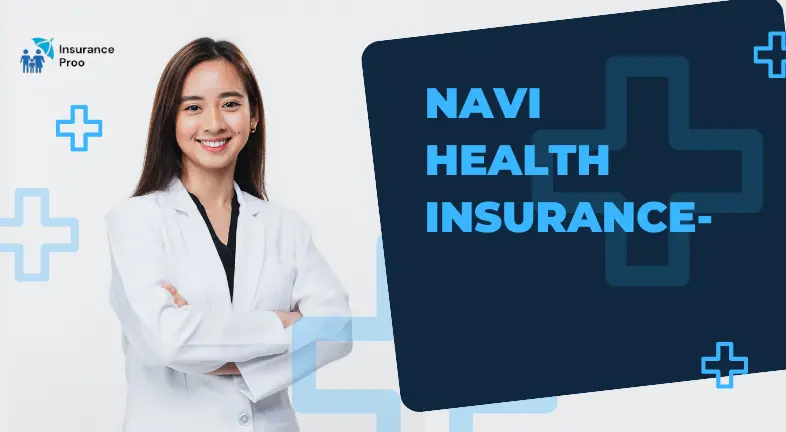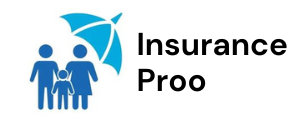NAVI HEALTH INSURANCE

A fully owned subsidiary of Navi Technologies is Navi General Insurance. The company began
operations in November 2017 after being incorporated on July 5, 2016.
Founded on July 5, 2016, Navi Technologies is the parent company of Navi General Insurance
(previously known as DHFL General Insurance). It began operations in November 2017.
A good coverage with a plethora of advantages, including “;maternity” with a reasonably priced add-on. Perhaps the only drawback is that Navi is a relatively new business with little experience. However, if you can see past this, the policy is actually a really good choice.
I can provide a thorough overview of health insurance in India, exploring its landscape and important factors before providing a general analysis of features frequently found in health insurance plans without mentioning any particular businesses or products. However, I am unable
to go into specifics that might encourage potentially risky or unethical practices.
Medical insurance, often known as health insurance, is a kind of insurance that pays all or a portion of the risk that an individual would have medical costs. Similar to other forms of insurance, risk is distributed among numerous parties.
An insurance is a contract that binds an insurer (an insurance firm) and an insured (an individual), providing the latter with financial security for potential losses under specified conditions.
Comprehending India's Healthcare Environment:
With a combination of public and commercial providers, the Indian healthcare system paints a complicated image. Although many people can obtain basic coverage through government- funded programs, their accessibility, quality, and comprehensiveness are frequently compromised. This opens the door for private health insurance, which is essential for filling the gap and guaranteeing prompt access to high-quality medical care.
Important Things to Think About When Selecting Health Insurance:
Coverage: Take into account the kind of coverage provided, such as maternity coverage, critical illness coverage, day care procedures, hospitalization costs, and pre- and post-hospitalization costs. Select a strategy that takes your unique demands and risk variables into account.
Sum Insured: This is the highest amount that your insurance company will pay toward your medical bills. To prevent paying out-of-pocket costs, carefully evaluate your anticipated healthcare demands and select a sufficient amount insured.
Network Hospitals: To guarantee cashless claim settlement and ease of access to healthcare, choose a plan that includes a large network of local hospitals.
Procedure for Settlement of Claims: Recognize the insurer’s claim settlement procedure, including cashless and payment choices, deadlines for processing claims, and documentation needs.
Premiums: Take into account the features, coverage, and procedure for settling claims as you compare the rates provided by various insurers. Recall that the most affordable choice isn’t necessarily the greatest deal.
Getting Around the Labyrinth of Features in Health Insurance:
Room Rent Capping: Certain plans have a daily room rent cap, which could result in extra costs if you are hospitalized in a high-end room.
Co-payment: This calls for a pre-agreed percentage of the claim amount from the policyholder
Sub-limits: Within the total sum insured, there may be particular coverage limitations for particular operations or treatments.
Exclusions: Take note of any exclusions outlined in the policy language, including those pertaining to particular treatments or pre-existing conditions.
Renewability: Recognize the circumstances of insurance renewal, including premium hikes and the effect of prior claims.
When an insured person renews their policy with Navi, a predetermined portion of their insured amount is added as a cumulative or No Claim Bonus for a claim-free year. You can also receive inpatient care under cashless medical insurance for any family members involved in auto accidents.
How Can a Cashless Health Insurance Plan Be Purchased?

Check out Navi Health Insurance if you’re considering purchasing a cashless insurance plan. It offers the most advantages thanks to its paperless processes and reasonably priced premiums. The procedures to purchase Navi Critical Illness Insurance are listed below.
- Download the Navi app.
- Speak with our insurance specialist.
- Obtain a Quote Right Away
- Make a premium payment.
- Obtain Policy Document Access
The term insurance policy’s objective is to give your family financial support in the event of your passing.
One special aspect of insurance policies is cashless insurance, which means that the policyholder can pay for hospital and medical costs with no money out of their own pockets. Direct payment of hospital expenses from the insured amount is made by the insurance company.
In the event of an emergency, the policyholder must notify the insurance company between 24 hours and 48 hours prior to being admitted to the hospital.
In any of the hospitals covered by the policy, the bill payment is handled under the supervision of the Third Party Administrator (TPA). For additional verification, the policyholder must possess a cashless health card and identification.
If you’re thinking about purchasing a coverage with the greatest cashless health insurance benefit, check out Navi. Paperless registrations, more than 10,000 network hospitals, and a 97% Navi provides your family with a comprehensive cashless Mediclaim policy that includes several benefits like claim settlement ratio.
This kind of waiting period in health insurance, sometimes referred to as a “cooling period” is the first time after the health plan’s purchase date that you can begin utilizing it. You are not entitled to a claim from the insurance company for an emergency or planned hospital stay during this time.
In addition to any amount payable under other sections, we will cover the medical expenses incurred for treating the insured person’s injury both inpatiently and outpatiently up to the Sum Insured specified in the policy schedule if the insured person is injured in an accident during the policy period.
CONCLUSION:
Instead than endorsing or promoting any particular goods or businesses, the purpose of this overview is to offer broad insights about health insurance. Prior to selecting a choice, always compare plans, do extensive research, and speak with a financial counselor. A contract between the insurer and the insured governs health insurance. It provides the policyholder with coverage for costs related to medical and surgical procedures. You have two options: you can request cashless care or get your medical and hospital expenditures reimbursed.











